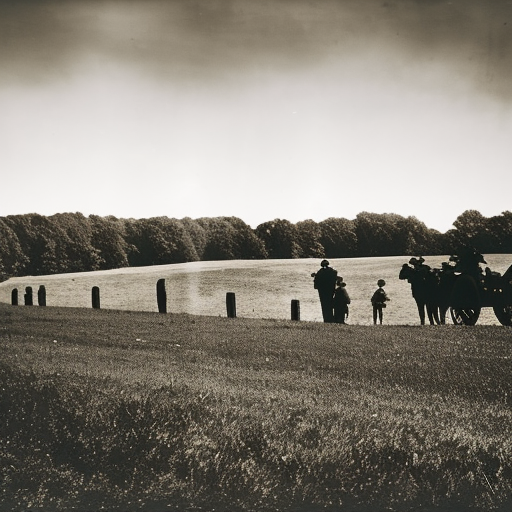The Gilded Age: A Summary
The Gilded Age refers to the period in American history from the late 19th century to the early 20th century, characterized by rapid industrialization, economic growth, and stark social inequality. It was a time of great wealth and excess for a small elite, while the majority of the population struggled with poverty and inequality.
Industrialization and Economic Growth
The Gilded Age saw a tremendous expansion of industrialization in the United States. Industries such as steel, oil, and railroads experienced significant growth, leading to the rise of powerful business tycoons like Andrew Carnegie, John D. Rockefeller, and J.P. Morgan. These industrialists amassed enormous fortunes and became known as the “Robber Barons” due to their ruthless business practices.
The expansion of railroads played a crucial role in connecting the country and facilitating trade. The completion of the First Transcontinental Railroad in 1869 opened up new markets and allowed for the movement of goods and people across the nation. This, in turn, fueled economic growth and increased industrial production.
Immigration and Urbanization
The Gilded Age also witnessed a massive influx of immigrants, primarily from Southern and Eastern Europe. These immigrants sought economic opportunities in the rapidly growing cities and worked in factories, mines, and construction sites. However, they faced harsh living and working conditions, as well as discrimination and xenophobia from the native-born population.
As cities grew, urbanization became a defining feature of the Gilded Age. Large cities like New York, Chicago, and Philadelphia experienced rapid population growth and the emergence of crowded and unsanitary slums. The lack of proper infrastructure and public services led to widespread poverty, disease, and social unrest.
Political Corruption and Reform Movements
The Gilded Age was marked by widespread political corruption. Powerful industrialists used their wealth to influence politicians and secure favorable policies. This era saw the rise of political machines, such as Tammany Hall in New York City, which controlled local politics through patronage and bribery.
However, the Gilded Age also witnessed the emergence of reform movements aimed at addressing the social and economic issues of the time. The Progressive Movement, led by figures like Jane Addams and Theodore Roosevelt, sought to combat political corruption, improve working conditions, and promote social justice. The movement advocated for labor rights, women’s suffrage, and the regulation of big business.
Labor Unrest and Strikes
The rapid industrialization and harsh working conditions of the Gilded Age led to widespread labor unrest and strikes. Workers organized themselves into labor unions, such as the American Federation of Labor (AFL), to fight for better wages, shorter hours, and safer working conditions. However, strikes often turned violent, and clashes between workers and management were common.
One of the most significant labor conflicts of the era was the Pullman Strike of 1894. Workers at the Pullman Palace Car Company in Illinois went on strike to protest wage cuts and poor living conditions. The strike spread across the country and was eventually suppressed by federal troops, highlighting the power imbalance between workers and corporations.
Legacy of the Gilded Age
The Gilded Age laid the foundation for the modern American economy and society. It saw the consolidation of corporate power, the growth of consumer culture, and the rise of the middle class. The era also exposed the deep social and economic inequalities that persisted throughout the period.
The reforms and movements that emerged during the Gilded Age set the stage for future progressive reforms, such as the establishment of labor laws, the regulation of monopolies, and the expansion of social welfare programs. The Gilded Age serves as a reminder of the challenges and complexities that arise during periods of rapid economic growth and social change.












